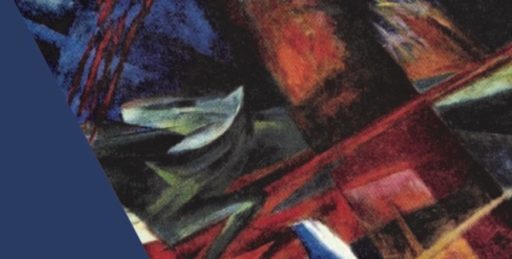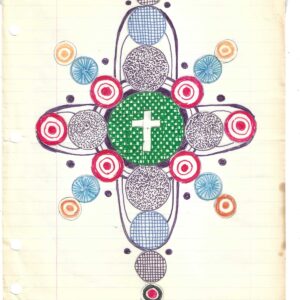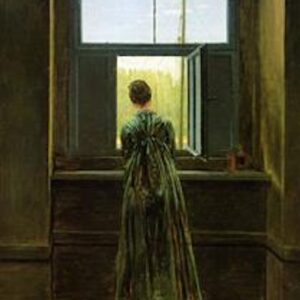Those words by Annie Dillard kept coming to me as I was reading Morgan Meis’s new book, The Fate of the Animals: On Horses, the Apocalypse, and Painting as Prophecy, the second volume in what Meis projects as a trilogy.
Dillard’s words are found in Teaching a Stone to Talk. A fuller version reads:
It is madness to wear ladies’ straw hats and velvet hats to church; we should all be wearing crash helmets. Ushers should issue life preservers and signal flares; they should lash us to our pews.
I was reminded of Dillard’s words not because Meis is also talking about church or about a person’s appropriate behavior while there. It’s because both Meis and Dillard are trying, through the force of literary style, to peel through the layers of complacency with which we wrap, hide, and protect ourselves from the naked truth of our existence as created beings, here, now, in this moment, on this earth and no other.
For Dillard, the style (we could call it word-peeling) is directed primarily at created things in nature. For Meis, the style is directed at created things mostly in museums: at paintings, to be exact. Different things and different creators, to be sure. But our dulled responses to these different things are very similar, and writers have to employ the only tools at their command, words, to remove our protective carapaces layer by layer.
Meis employed his dis- or un-layering style first in The Drunken Silenus: On Gods, Goats, and the Cracks in Reality.There Meis used Peter Paul Rubens’s 1620 painting, “The Drunken Silenus,” to expose the thinness of the membrane that separates mortality from immortality. Meis probes that membrane again in this second book, The Fate of the Animals. Here, he chooses Franz Marc’s 1913 painting, “The Fate of the Animals,” as a source for revealing or at least giving us a glimpse of the coming-into and going-out-of existence of all beings, including our own transient selves.
Does Meis’s project strike you as a crazily ambitious, crazily quirky? Two short books (both fewer than 200 pages), each focused on only one painting, one by an acknowledged master (Rubens), one by a painter I admit I had never heard of (Marc). The painters themselves unconnected by genre, historical setting, or personal or professional interests. Yet both painters’ works are treated as if equally endowed by their capacity to change our lives.
Absurd, on the face of it: Rubens’s painting depicts the old satyr Silenus in a drunken stupor seeming to fall smack into our laps out of yet another noisy bacchanal. Marc’s painting is tumultuous in another way: a chaotic vision of various agonized animals (deer, boars, horses) shot through with jagged bursts of colored lightning or flame. (Part of the painting really was burned, and subsequently retouched in brown by Marc’s friend and colleague, Paul Klee.)
But Meis is not acting as a museum docent here. He is not leading us from one canvas to another while we troop behind, forcing ourselves to pay attention to a flood of facts and a rehearsal of received opinion. Rather, he is trying to encourage us to take as active a part in a recovery or reinvigoration of vision as he himself is doing through his writing: to see, deeply see, what the two paintings are showing us beyond or within what their formal properties suggest.
And in helping us learn to do that seeing, Meis’s narrator stands not facing us, but at our shoulder, looking at Marc’s painting along with us, and bringing us along with him as he notes a fresh angle of view, rethinks what he said before, then returns to the painting with new energy. Meis identifies this style as one that, as he says at one point, instead of going straight to its target, “takes us around in circles and spirals. It doubles backs on itself and works its way inside. It spirals down to its own foundation and back out again.”
This is why for Meis, style is no mere tool, no verbal mechanism separate from or external to the object in view. Style is intimately connected with the act of seeing itself, that is, with the act of seeing deeply — style and seeing so intimately connected that the style and the thing seen edge closer and closer as one reads, until they almost join.
The result, for us readers, is an experience, not of some contrived “meaning” of the work of art itself but instead of the truth which the artist — in this case Franz Marc — was trying to embody in the work. But such a truth is unspeakable, because it is buried so deeply both in Franz Marc’s heart and in our own that only a great work of art can suggest it, call it forth from the sediment of custom in which we have buried it.
The closest Meis comes to speaking the unspeakable may be in these lines towards the book’s end — words that carry their full force only when we’ve spiraled down to them from the words that came before:
That which is most terrible is that which is the result of the terrible forces that have opened up the space of the world so that anything may be at all. And the cosmos was ripped open in the beginning, by Marduk or Yahweh or Odin or whoever, and it was the trauma of this ripping and sundering and this earth shaking and this convulsing of being that is the condition for the possibility of the very beings who witness the terror of that which brings beings into beings.
Franz Marc wasn’t on the battlefield when he painted “The Fate of the Animals,” in 1913. The painting doesn’t “forecast” World War I in any literal way. War itself was still unthinkable. But a kind of premonition was possible. Three years later Marc would be at the front, at Verdun, where in the midst of an enemy barrage he died, probably instantly, of a shrapnel wound to his head.
In Marc’s letters to his wife, from which Meis quotes often, it’s clear Marc chose to be in the front lines, to expose himself to the reality of trench warfare, and to find in that bloody tumult a kind of confirmation of the truth towards which he’d been striving in his painting. Among his last words are these to his wife, two days before he died: “I myself feel well — my nerves are untouched to my own amazement.… For days I have seen nothing but the most awful scenes that the human mind can imagine.…”
Meis tries to encourage in us a similar way of seeing “the terrible forces that have opened up the space of the world,” and perhaps to discover that the experience has deepened us as well:
In the end, the final result of looking at and truly seeing “The Fate of the Animals” is not to form a thought at all. It is not to have an idea or to have reached a conclusion. In the end, really to see “The Fate of the Animals” would be to have one’s life changed.
After getting his PhD in English literature, George Dardess taught close reading to his own students until his retirement. Since then he has been ordained a Deacon in the Roman Catholic Church and written several books on Muslim-Christian relations. He has also created the graphic novel Foreign Exchange.





